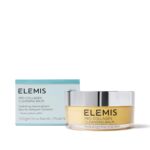The Ordinary still applying — The Ordinary Retinol 0.5% in Squalane.
“`html
Disclosure: If you purchase through our link, we may earn a small commission at no extra cost to you. We only recommend products we trust and believe are a good fit for our readers. Your support helps us keep creating great content.
Still Applying Retinol on Damp Skin? Stop Now
If you’re a skincare enthusiast, you’ve likely heard the advice to apply retinol on damp skin to boost absorption. But as it turns out, this might not be the best approach. Retinol is a powerful ingredient, and proper application is key to maximizing its benefits while minimizing irritation. Let’s dive into why applying retinol on damp skin might not be the best practice and how to use it effectively for optimal results.
Why It Matters: The Benefits of Proper Retinol Application
Retinol is a derivative of vitamin A and is renowned for its anti-aging and skin-renewing properties. When used correctly, it can:
- Reduce fine lines and wrinkles by boosting collagen production.
- Improve skin texture by accelerating cell turnover.
- Even out skin tone by fading hyperpigmentation.
- Minimize breakouts by unclogging pores and regulating sebum production.
However, retinol can also cause irritation, dryness, and sensitivity if not applied properly. Applying it on damp skin might increase the risk of irritation, as water can dilute the product and compromise its effectiveness. To get the most out of your retinol, it’s crucial to apply it to dry skin to ensure optimal absorption and minimize potential side effects.
How Retinol Works on Your Skin
Once applied, retinol penetrates the skin and converts into retinoic acid, which interacts with skin cells to stimulate collagen production and promote cell turnover. This process helps improve skin elasticity, reduce fine lines, and enhance overall skin texture. However, the absorption rate of retinol can be affected by various factors, including the condition of your skin when you apply it.
When applied to damp skin, water can dilute the retinol, reducing its concentration and effectiveness. Additionally, damp skin is more permeable, which can increase the risk of irritation and sensitivity. To ensure that retinol works optimally, it’s best to apply it to dry skin, allowing it to penetrate deeply without being diluted by excess moisture.
How to Use The Ordinary Retinol 0.5% in Squalane Correctly
The Ordinary Retinol 0.5% in Squalane is a popular and affordable option for those looking to incorporate retinol into their skincare routine. To use it effectively, follow these steps:
- Cleanse your skin thoroughly to remove dirt, oil, and makeup. Use a gentle cleanser to avoid stripping your skin of its natural oils.
- Pat your skin dry with a clean towel. Ensure your skin is completely dry before applying retinol.
- Apply a pea-sized amount of The Ordinary Retinol 0.5% in Squalane to your face and neck, avoiding the eye area.
- Wait for 10–15 minutes before applying other skincare products, such as moisturizer or sunscreen. This allows the retinol to absorb fully.
- Follow with a moisturizer to hydrate and soothe your skin, especially if you’re new to retinol or have sensitive skin.
- Use sunscreen daily to protect your skin from UV damage, as retinol increases sun sensitivity.
Start by using retinol 2–3 times a week and gradually increase to nightly as your skin builds tolerance. This gradual approach helps minimize irritation and allows your skin to adjust to the powerful ingredient.
Common Myths About Retinol Application
There are several myths surrounding retinol application that can lead to improper use. Let’s debunk some of the most common ones:
- Myth: Applying retinol on damp skin increases absorption. While water can enhance the absorption of some skincare ingredients, it can dilute retinol, reducing its effectiveness and potentially causing irritation.
- Myth: You should apply retinol to wet skin to prevent dryness. Retinol itself can be drying, and applying it to damp skin won’t necessarily prevent dryness. Instead, follow up with a moisturizer to hydrate your skin.
- Myth: The more retinol you use, the better the results. Using too much retinol can lead to irritation, redness, and peeling. Always start with a lower concentration and gradually increase as your skin tolerates it.
- Myth: Retinol is only for anti-aging. While retinol is highly effective for anti-aging, it also benefits acne-prone, dull, and uneven skin by promoting cell turnover and reducing congestion.
By following evidence-based practices, you can maximize the benefits of retinol while minimizing potential side effects.
Final Thoughts + CTA
Proper retinol application is key to achieving glowing, youthful skin without irritation. Applying retinol to dry skin ensures optimal absorption and minimizes the risk of side effects. If you’re looking for an effective and affordable retinol option, The Ordinary Retinol 0.5% in Squalane is a fantastic choice. Give it a try today and experience the difference for yourself!
“`




